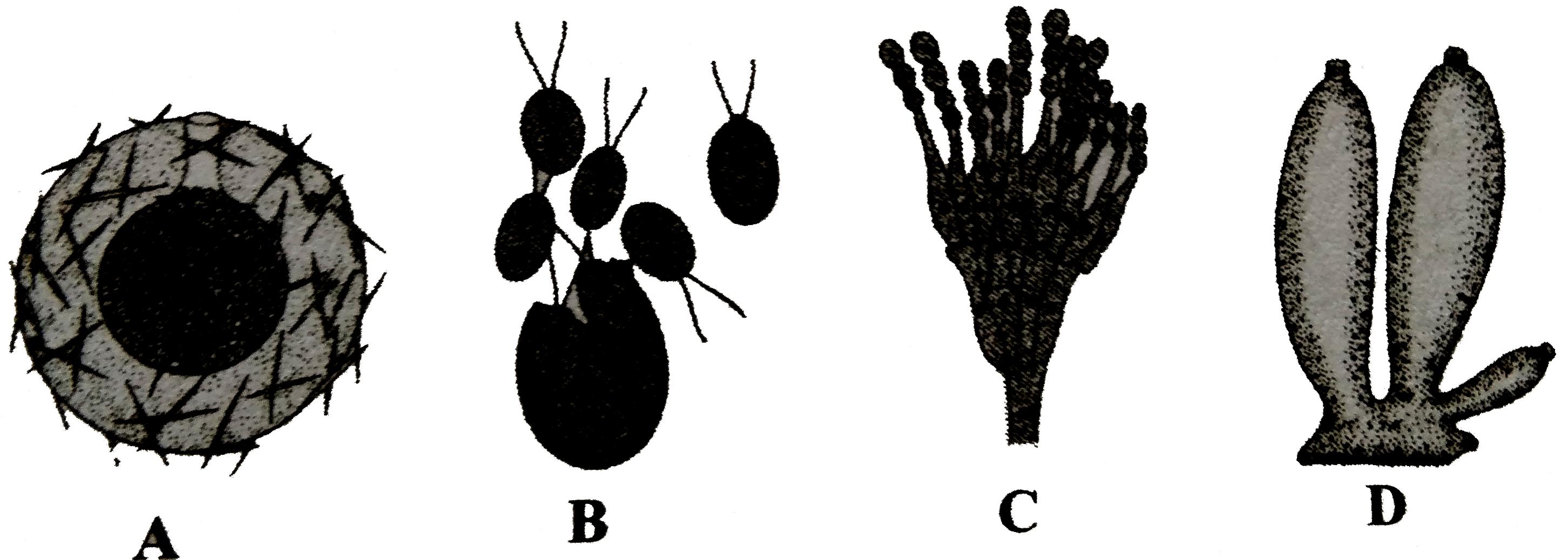Name the asexual bodies produced by sponges.
Step-by-Step Solution:
1. Understanding Sponges: Sponges belong to the phylum Porifera, which are simple aquatic organisms known for their porous bodies.
2. Asexual Reproduction in Sponges: Sponges primarily reproduce asexually, which means they can produce offspring without the fusion of gametes.
3. Methods of Asexual Reproduction:
- Fragmentation: This is a common method where the sponge breaks into fragments, and each fragment can develop into a new individual.
- Budding: Sponges can reproduce by budding, which can occur in two forms:
- External Budding: New individuals form on the outer surface of the parent sponge.
- Internal Budding: This occurs within the sponge's body, specifically in the spongocoel cavity.
4. Gamule Formation: The internal budding leads to the formation of specialized asexual bodies called gamules. These gamules are resistant structures that can survive harsh environmental conditions.
5. Conclusion: Therefore, the asexual bodies produced by sponges are known as gamules.
- Fragmentation: This is a common method where the sponge breaks into fragments, and each fragment can develop into a new individual.
- Budding: Sponges can reproduce by budding, which can occur in two forms:
- External Budding: New individuals form on the outer surface of the parent sponge.
- Internal Budding: This occurs within the sponge's body, specifically in the spongocoel cavity.
Topper's Solved these Questions
- REPRODUCTION IN ORGANISMSBook:ICSEChapter:REPRODUCTION IN ORGANISMSExercise:PRACTICE QUESTIONS (B)( Short Answer Type Questions) (2 Marks each)
Explore 17 Videos
- REPRODUCTION IN ORGANISMSBook:ICSEChapter:REPRODUCTION IN ORGANISMSExercise:PRACTICE QUESTIONS (C)( Short Answer Type-II Questions) (3 Marks each)
Explore 15 Videos
- REPRODUCTION IN ORGANISMSBook:ICSEChapter:REPRODUCTION IN ORGANISMSExercise:COMPETITION CORNER OBJECTIVE TYPE QUESTIONS ((B) Assertion and Reason Type Questions) (Fopr AIIMS aspirants)
Explore 16 Videos
- QUESTION PAPER 2022 TERM 1Book:ICSEChapter:QUESTION PAPER 2022 TERM 1Exercise:MULTIPLE CHOICE QUESTIONS
Explore 45 Videos
- REPRODUCTIVE HEALTHBook:ICSEChapter:REPRODUCTIVE HEALTHExercise:SOURCE BASED QUESTIONS
Explore 23 Videos
Similar Questions
Knowledge Check
Assertion: Gemmules are asexual bodies found in sponges.
Reason: They are formed for the persistence of race.AIf both Assertion and Reason are true and the Reason is the correct explanation of the Assertion.BIf both Assertion and Reason are true and the Reason is not
the correct explanation of the Assertion.CIf Assertion is true but the Reason is false.DIf both Assertion and Reason are false.An asexual spore produced by a sac fungus is called :
AconidiumBascosporeCbasidiosporeDhyphaStudy the following figures and select the correct statements regarding these.

(i)A shows mode of asexual reproduction in sponges through internal buds.
(ii)B shows sexual reprodction through zoospores in Chlamydomonas.
(iii) C shows asexual reproduction through fragmentation in Penicullium.
(iv) D shows external budding in Sycon.A(i) and (ii)BSmaller organisms always have shorter life span and vice versa.C(ii), (iii), and (iv)D(i) and (iv)
